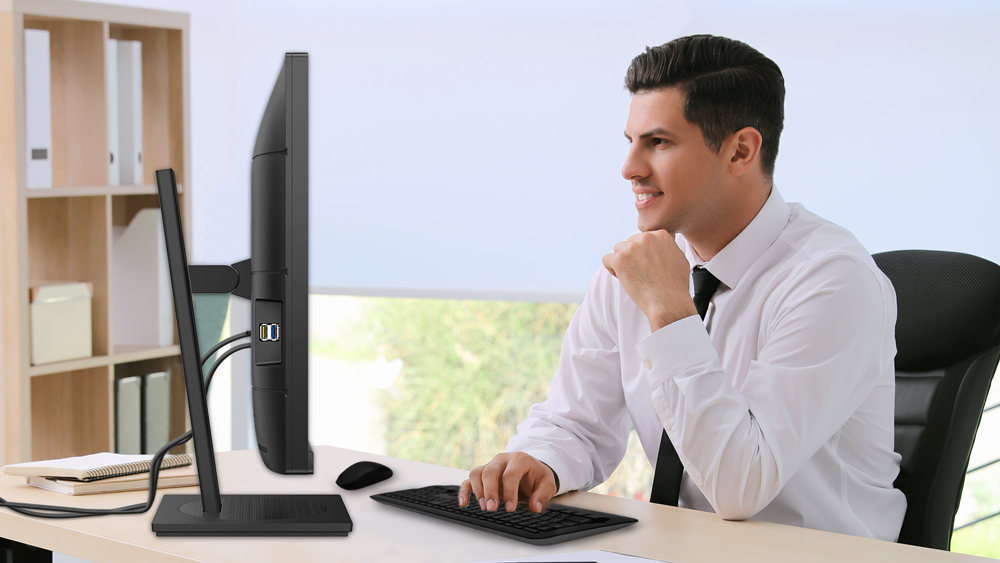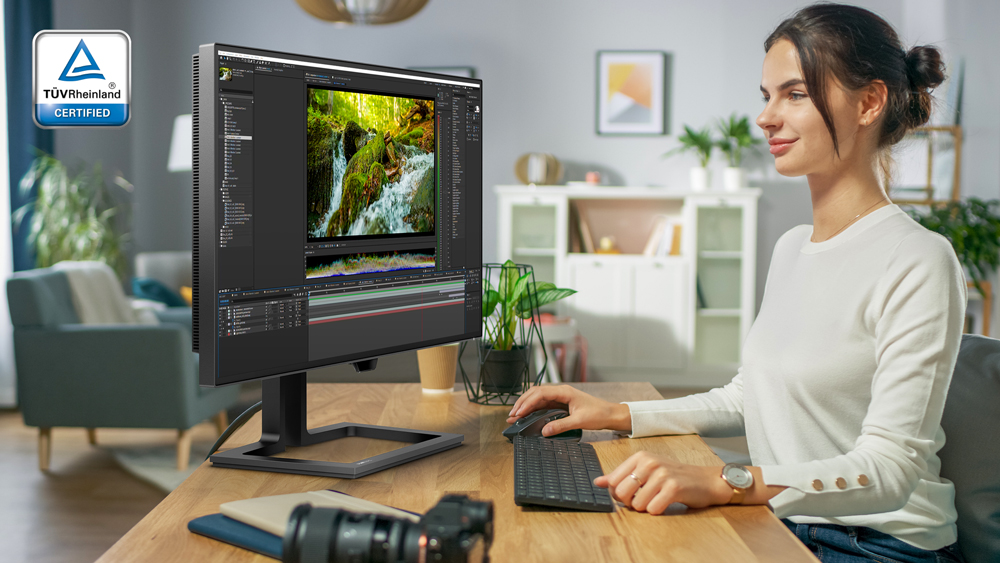Whether an office worker or one of the growing numbers of employees who have learned the advantages of working from home, during the pandemic, all monitor users are keenly aware that a positive experience in front of the display can greatly increase productivity by eliminating eye strain and the general feeling of fatigue that accompanies it. Philips, as a provider of some of the world’s best designed B2B monitors, strives to ensure that the user’s eyesight is protected by strict compliance with the requirements of standards such as TÜV Rheinland’s Eye Comfort.
What exactly does TÜV Rheinland mean by Eye Comfort? Science tells us that light has different energy levels, and that some of these levels have the potential to harm us. Most people are probably familiar with “sun-burn”, for example. In the case of computer displays, the concern is with light in the ultraviolet or blue ranges, which can harm the skin and/or eyes. The blue light emitted by displays may also interfere with the user’s natural patterns of relaxation and sleep. Using a computer late at night may interfere with normal sleep patterns, for example.
TÜV Rheinland’s ‘Eye Comfort’ certification responds by requiring that a display is “flicker-free” or allows only very low levels of blue-light emission. Take Philips model 279P1, for example. Philips 279P1 monitor, in 4K2K UHD resolution, provides space and clarity for an optimal visual working environment.
Nevertheless, like many other Philips’ monitors, model 279P1 complies with the TÜV Rheinland standard for Eye Comfort, to prevent eye strain caused by prolonged computer use. TÜV Eye Comfort certification ensures that monitor 279P1 is flicker-free, reducing eye fatigue, while operation in LowBlue Mode also reduces eye strain, boosting user productivity.
 Philips Monitors 279P1 279P1 complies with the TÜV Rheinland standard for Eye Comfort.
Philips Monitors 279P1 279P1 complies with the TÜV Rheinland standard for Eye Comfort.
TÜV Rheinland’s Eye Comfort standard also demands that there are zero ultraviolet emissions at wavelengths below 380nm, including UVA, UVB and UVC.
One of the very latest B2B monitors from Philips is model 329P1H. Again, an optimal viewer experience is ensured by flicker-free viewing. Due to the way brightness is controlled on LED-backlit screens, some users experience flicker on their screen which causes eye fatigue. Philips Flicker-free Technology applies a solution that regulates brightness and reduces flicker for more comfortable viewing and compliance with TÜV Rheinland’s requirements for eye protection.
Likewise, monitor 329P1H also complies with the TÜV Rheinland Eye Comfort standard by offering a LowBlue viewing mode. Studies have shown that just as ultraviolet light can cause eye damage, short-wavelength blue light from LED displays can also harm the eyes and affect vision over time. Developed to support health and safety, Philips LowBlue Mode setting uses smart software technology to reduce potentially harmful blue light.

The eyecare monitors by Philips Monitors are certified with TÜV Rheinland’s Eye Comfort.
While monitors for the home environment are associated primarily with entertainment, they can be called upon to play any number of roles, from home-office use to gaming. This means that display quality and eye comfort continue to be key design issues.
Model 241V8, a member of Philips’ “V” or Value line, in a 23.8-inch, 16:9 Full HD (FHD) format, offers an advanced IPS display for extra-wide viewing angles of 178/178 degrees, which results in high static contrast ratios for extra vivid and bright images. As with the Philips monitors for work environments, monitor 241V8 also supports the powerful eye-protection of LowBlue mode.